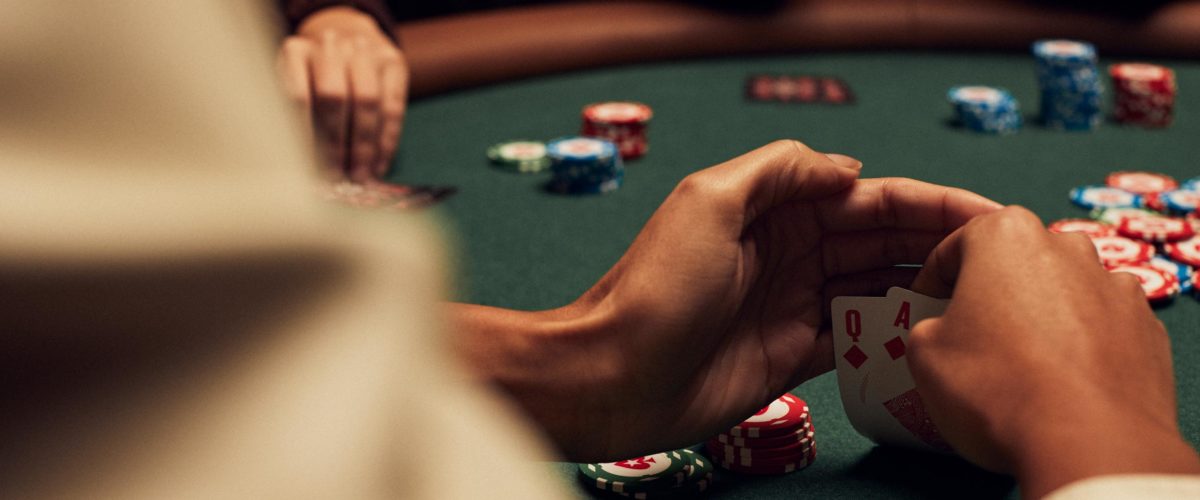Calculating Outs
One of the very easy calculations you should learn even at this stage in your poker career concerns the concept of counting your “outs”.
What Are Outs?
We have already seen how the relative strength of a poker hand can increase or decrease as flop, turn and river is dealt. If you have a hand that is probably losing, but has the potential to improve to a winner, (ie, a drawing hand) you need to decide whether it is worth continuing with it through the various stages of the pot.
In short, you need to identify the cards that will improve your hand to win at showdown – known as “outs”.
We’ll run through a few common examples.
Example – Flush Draw
- You have Q♥ 3♥ . The flop is 7♥ 9♣ K♥ .
- There are 13 cards of each suit in the deck. You hold two hearts and another two are on the board, so four of the thirteen hearts have therefore already been dealt
- This means that there are still nine hearts that can possibly come (A♥ J♥ 10♥ 9♥ 8♥ 6♥ 5♥ 4♥ 2♥ ) and therefore nine cards that can improve your hand to a (probable) winner.
- You have nine outs.


Example – Straight Draw
“Open-ended”
- You have J♠ 10♠ . The flop is 6♣ Q♥ K♦
- Any ace or nine will complete your straight. This is known as an “open-ended” straight draw.
- There are four aces A♣ A♦ A♥ A♠ and four nines 9♣ 9♦ 9♥ 9♠ in the deck.
- You have eight outs.
“Gutshot”
- You have J♥ 9♠ . The flop is K♣ Q♥ 7♦ .
- Only a ten would in the middle would make your straight here. This is referred to as a “gutshot” straight draw.
- There are four unseen 10♠ 10♣ 10♥ 10♦ .
- You have four outs.
Example – Straight Draw and Overcards
- You have A♥ K♥ . The flop is J♠ 10♦ 2♣ .
- Any of the four queens (Q♣ Q♦ Q♥ Q♠ ) will give you a straight.
- If your opponent has a middle pocket pair (eg. 9♥ 9♣ ), pairing your ace or king will give you a higher pair.
- Subtracting your ace and king, you have three aces (A♣ A♦ A♠ ) and three kings (K♣ K♦ K♠ ) left to make a better pair, plus the four queens to make a straight Q♣ Q♦ Q♥ Qs]
- You have ten outs.
Now we can start to consider your opponent’s hands.
Example – Set Against a Flush Draw
- You hold 7♦ 7♥ . The board shows 2♠ 7♠ J♠ . You have a set – which is generally strong – but you can already be behind to an opponent holding two spades.
- You can still improve to beat a flush. To do this you need to “pair the board” with another jack or two to make a full house, or even the final seven to make four-of-a-kind!
- The cards that could pair the board are therefore J♣ J♦ J♥ 7♣ 2♣ 2♦ 2♥ .
- You have seven outs.
- If the turn does not improve your hand, you still acquire three more outs with this card (eg. the turn is a four, you then have three more fours to hit and improve to ten outs)
Example – Straight Draw AND a Flush Draw
- You hold 6♥ 7♥
- The flop is 4♥ 5♣ J♥ .
- You have both an open-ended straight draw and a flush draw.
- As you will recall from the earlier example, this gives you nine cards to make the flush (A♥ K♥ Q♥ 10♥ 9♥ 8♥ 5♥ 3♥ 2♥ ) but your the eight cards you’d need to make a straight are reduced to six (8♣ 8♦ 8♠ 3♣ 3♦ 3♠ ) because the 8♥ and 3♥ have already been counted.
- You have fifteen outs.
Why is this important?
Learning to calculate your outs gives you a much firmer grasp on how poker hands can play out, and swing from one way to another as the cards are revealed. You’ll find later on in your learning that you will need to be able to count your outs to apply this information in some basic (and some complicated) calculations.
Test your knowledge with our short quiz below


